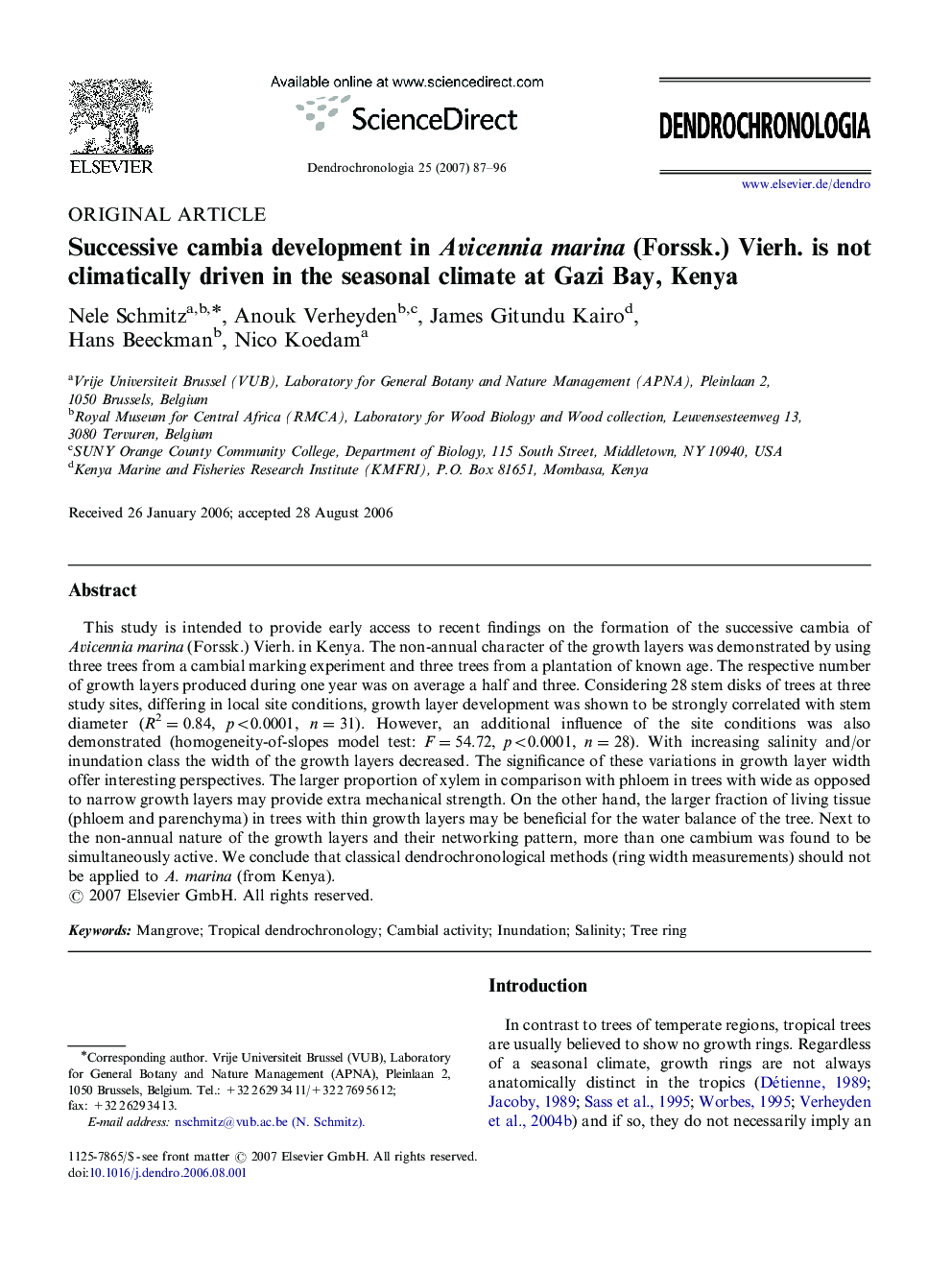| Article ID | Journal | Published Year | Pages | File Type |
|---|---|---|---|---|
| 85799 | Dendrochronologia | 2007 | 10 Pages |
This study is intended to provide early access to recent findings on the formation of the successive cambia of Avicennia marina (Forssk.) Vierh. in Kenya. The non-annual character of the growth layers was demonstrated by using three trees from a cambial marking experiment and three trees from a plantation of known age. The respective number of growth layers produced during one year was on average a half and three. Considering 28 stem disks of trees at three study sites, differing in local site conditions, growth layer development was shown to be strongly correlated with stem diameter (R2=0.84, p<0.0001, n=31). However, an additional influence of the site conditions was also demonstrated (homogeneity-of-slopes model test: F=54.72, p<0.0001, n=28). With increasing salinity and/or inundation class the width of the growth layers decreased. The significance of these variations in growth layer width offer interesting perspectives. The larger proportion of xylem in comparison with phloem in trees with wide as opposed to narrow growth layers may provide extra mechanical strength. On the other hand, the larger fraction of living tissue (phloem and parenchyma) in trees with thin growth layers may be beneficial for the water balance of the tree. Next to the non-annual nature of the growth layers and their networking pattern, more than one cambium was found to be simultaneously active. We conclude that classical dendrochronological methods (ring width measurements) should not be applied to A. marina (from Kenya).
